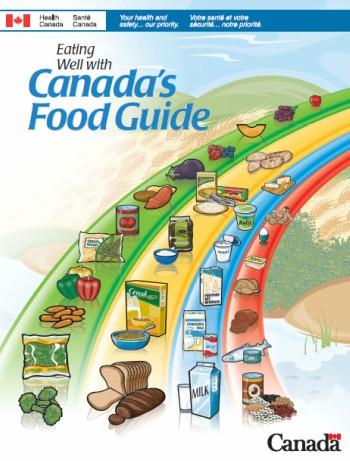
Canada’s Food Guide Updated
The release of Canada’s new Food Guide is exciting. The previous Food Guide had been released in 2007 and was in need of a revamp to keep up-to-date with the current science. That Food Guide displays a rainbow of foods split into four different food groups. The new guide is illustrated with an image of a plate, half of it filled with a variety of fruits and vegetables, one-quarter complete with an assortment of whole grains and another quarter consisting of a mixture of protein sources. There are some obvious changes between these two guides – which you can see from the pictures alone – but, are all of these changes positive?
We invited registered dietitian Michelle Jaelin to fill us in on the pros and cons of Canada’s new Food Guide.
The new food guide looks simpler, or more general, compared to the one we’re used to. Shouldn’t healthy eating be more complicated than this?
Jaelin: “The goal of the new Canada’s Food Guide was to make healthy eating easier for Canadians. Note that it is just a guide, and these are not food rules. Healthy eating is still different for everyone, which is why it’s important to consult with a registered dietitian to find out what works best for you.”
The number of servings for each food group has been removed from the guide. Does that mean serving suggestions have changed? How do we know how much of each of these three new ‘food groups’ to eat?
Jaelin: “Only phase one of Canada’s Food Guide has been released. Phase two should show us the different serving sizes which are needed for meal planning in institutional settings. For example, in hospitals, day care centres, prisons, long term care facilities, etc. food service managers need serving sizes to plan meals for the populations they serve.
“Once phase two has been released, Canadians can use the serving size guide to figure out what works best for them.”
Different population groups have different dietary needs, but the food guide still doesn’t talk about this, why not?
Jaelin: “It’s important to note that the food guide is meant to be used as a general tool for healthy eating. Canada’s Food Guide was never meant for specific populations, i.e., patients with diabetes or celiac disease or other health conditions. Also, because of Canada’s diversity, it is difficult to encompass all the different foods and ways of eating into the guide. In planning meals for specific populations, different examples are shown on the plate to reflect the needs of different populations.”
Why was dairy removed as a food group?
Jaelin: “Dairy was not removed as a food group. It has been grouped in with proteins.”
There are now recommendations beyond what we should be eating, it now suggests when and how we should be eating. Do these things really matter?
Jaelin: “Yes. There is increasing evidence that how we eat is just as important as what we eat. Mindful eating, cooking your own food (mostly from scratch), and family meals have been scientifically proven to affect our overall health. This is why Health Canada modified the food guide to incorporate those principles to help Canadians be healthier and happier.”
Canada’s Food Guide offers updated recommendations to make healthy eating easier. The guide also incorporates principles for how to eat. Phase two will provide more information so individuals can figure out what works best for them.




























